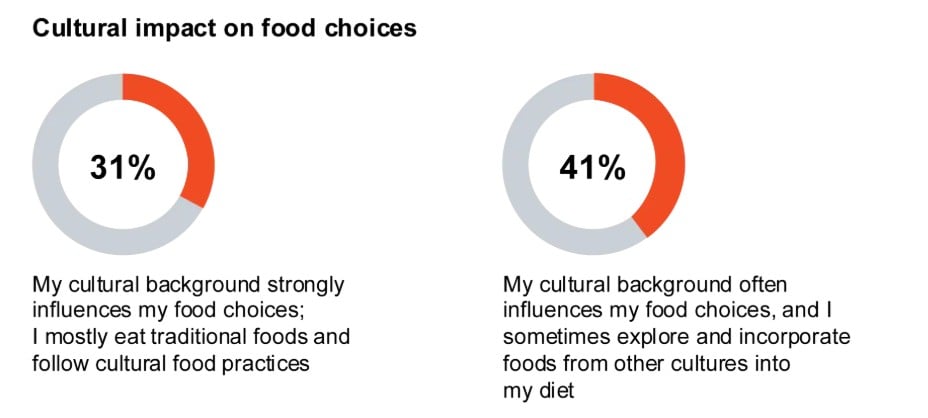Publisher: Maaal International Media Company
License: 465734
World Bank expects Saudi economy to grow by 2.2% in 2023
World Bank revealed in a report published today, Wednesday, on its official website, that in the wake of the significant increase in Saudi Arabia’s gross domestic product by 8.7% in 2022, economic growth is expected to slow down to 2.2% in 2023, indicating that the gross domestic product For the oil sector, it will decline by 2% due to Saudi Arabia’s commitment to the production cuts agreed upon by OPEC +.
He explained that with oil prices remaining at relatively high levels, the accommodative fiscal policy and strong growth rates in private credit activities are expected to mitigate the contraction in the oil sector. As a result, the non-oil sectors are expected to witness growth rates of 4.7% in 2023.
The World Bank said that the economies of the Gulf Cooperation Council are expected to grow at a slower pace in 2023 compared to the previous year due to the decline in oil and gas revenues and the slowdown in global economic activity, according to the new World Bank report on the latest economic developments in the Gulf region. The GCC economy is expected to grow at a rate of 2.5% in 2023 and 3.2% in 2024.
اقرأ المزيد
This comes in comparison with the remarkable growth of the gross domestic product in the region, which amounted to 7.3% in 2022, due to the strong increase in oil production for most of this year.
The reason for the underperformance is primarily due to the decline in hydrocarbon GDP, which is expected to contract by 1.3% in 2023 after the announcement of OPEC+ production cuts in April 2023 and the global economic slowdown. However, strong growth in the non-oil sectors, which is expected to reach 4.6% in 2023, will reduce the inefficiencies in the hydrocarbon activities, due primarily to private consumption, fixed investment and fiscal easing in response to revenues. Relatively high oil prices in 2023
The recent release of the new World Bank report on the latest economic developments in the Gulf region indicates that the structural reforms undertaken in the past few years have supported very modest growth rates this year. The improvement of the business climate and competitiveness, and general improvements in the participation of women in the labor force in the countries of the Gulf Cooperation Council, especially in the Kingdom of Saudi Arabia, have led to achieving the desired returns, although more efforts must be made to achieve the desired diversity. ..
This edition of the new World Bank report on the latest economic developments in the Gulf region under the title “The Health and Economic Burden of Non-communicable Diseases in the GCC Countries” focuses on how non-communicable diseases have become the main cause of death and disease, as they are the cause of nearly accounts for 75% of all deaths and disabilities in the region. Of the reported deaths and disabilities, more than 80% are due to only four main categories of non-communicable diseases: cardiovascular diseases, diabetes, cancer, and respiratory diseases.
This report also highlights the significant cost of non-communicable diseases to the economies of the GCC countries. A recent study published in the Journal of Medical Economics, a collaborative effort between experts at the World Bank and key stakeholders from across the GCC, estimated the direct medical costs of seven major non-communicable diseases at $16.7 billion in 2019 alone. This same study found that non-communicable diseases also impose significant indirect costs on the economies of these countries, through a negative impact on human capital. The cost of labor force productivity losses alone in the GCC economies amounted to more than $80 billion in 2019. With the aging of the population, and the prevalence of non-communicable diseases, these costs are expected to increase in the future rather than decline.
Addressing the health and economic burdens of NCDs in the region requires addressing the underlying risk factors that cause NCDs in the first place. The main components of these risk factors are modifiable behavioral risk factors such as unhealthy diet, lack of physical exercise, smoking and sugar intake. Environmental risk factors, for example, pollution, are also important. Air pollution levels in the GCC countries now far exceed averages in Organization for Economic Co-operation and Development countries
For his part, Issam Abu Suleiman, Regional Director of the Gulf Cooperation Council Department at the World Bank, said, “Many GCC countries have already taken strong steps to address these risk factors, including imposing taxes on tobacco products, smoke and sugary drinks, Restrict or prohibit advertising, promotion or sponsorship of tobacco and smoke products, and reduce the amount of salt in foods. Many GCC countries have also set themselves important environmental targets. There is an opportunity to do more to reduce NCDs and their costs in the future. “
This report stresses that effectively addressing the health and economic burden of non-communicable diseases requires a comprehensive, whole-of-government approach, a strategic focus on prevention, targeting young people and adolescent youth, and the development and implementation of multisectoral actions and interventions based on Evidence and evidence, taking into account the relevant context. Government agencies should cooperate now to reduce the risk of non-communicable diseases in the future.
Prospects for the GCC countries
Bahrain: Bahrain’s economic prospects depend on the future of the oil markets and the results of the acceleration of the implementation of the structural reforms agenda within the framework of the amended public finances balance program. It is expected that the growth rate will decline to 2.7% in 2023, and will average 3.2% in 2024-2025 with continued fiscal consolidation. Growth in the hydrocarbon sector is expected to contract by 0.5% in 2023, and at the same time, non-hydrocarbon sectors will continue to expand by 3.5%, supported by recovery in the tourism and services sectors and the continuation of infrastructure projects.
Kuwait: Economic growth is expected to slow to 1.3% in 2023 in response to the more cautious production approach of OPEC+ and slowing global economic activity. The oil sector is expected to contract by 2.2% in 2023 despite the recent construction of the Al-Zour refinery. The non-oil sectors in Kuwait are expected to grow by 4.4% in 2023, primarily due to private consumption. The policy uncertainty resulting from the political stalemate is expected to undermine the implementation of new infrastructure projects.
Oman: The Omani economy is expected to continue to grow, albeit at a slower pace, primarily driven by the acceleration of the implementation of structural reforms under Vision 2040. The overall growth rate is expected to decline to 1.5% in 2023 due to the decline in global demand. Accordingly, the hydrocarbons sector is expected to contract by 3.3% due to the recent production cuts by OPEC +, while the non-oil economy is expected to continue the recovery path by achieving growth rates of 3.1% in 2018. 2023, and this will support the acceleration of providing resources for infrastructure projects, increasing industrial capabilities from renewable energy sources, and the tourism sector.
Qatar: Real GDP is estimated to decline to 3.3% in 2023 after a strong performance in 2022, with the hydrocarbon sector expanding by 0.8%. The North Field Expansion Project is expected to boost the hydrocarbons sector in the medium term once the field comes into commercial operation. At the same time, strong growth is expected this year in the non-hydrocarbon sectors, amounting to 4.3%, driven by private and public consumption.
UAE: Economic growth is expected to slow in 2023 compared to 2022 due to the decline in global economic activity, contraction in oil production, and tightening public finances. Accordingly, the real GDP is expected to grow by 2.8% in 2023 due to the decline in the growth of oil activity by 2.5%, and at the same time the strong growth of the non-oil sector by 4.8% will lead to an easing of the contraction in oil activities because of the strength of domestic demand, especially in the sectors of tourism, real estate, construction, transportation and manufacturing industries.








